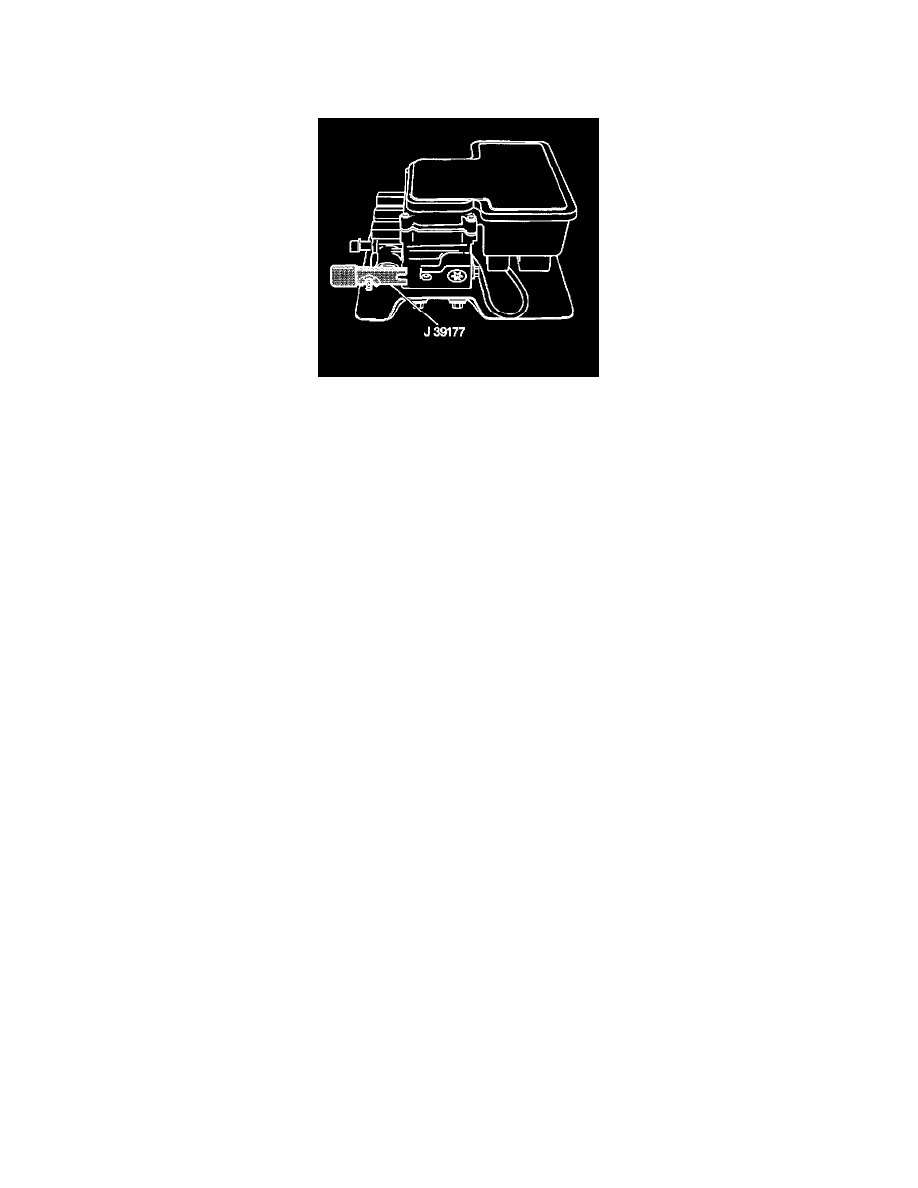Hombre S Space Cab 2WD V6-4.3L (2000)

1. Fill the pressure tank at least 2/3 full of brake fluid.
2. Charge the pressure bleeder with 140 - 170 kPa (20 - 25 psi) air pressure.
3. Bleed the pressure bleeder each time fluid is added in order to remove any trapped air.
4. Use the J 39177 in order to depress and hold the valve stem on the combination valve.
5. Remove the master cylinder reservoir cap and install the master cylinder pressure bleeder adapter, J 35589, to the reservoir.
6. If the brake pressure modulator valve of the antilock brake system is replaced, or if you suspect that air is trapped inside, bleed the brake pressure
modulator valve first. Refer to Brake Pressure Modulator Valve (BPMV) Replacement.
7. Follow this sequence if it is necessary to bleed all four wheels:
1. Right rear wheel cylinder or caliper
2. Left rear wheel cylinder or caliper
3. Right front wheel caliper
4. Left front wheel caliper
8. Connect the hose from the pressure bleeder to the adapter at the master cylinder.
9. Open the tank valve.
10. Use J 28434 to bleed the wheel cylinders.
1. Place the hex end of the wrench over the wheel cylinder bleeder valve.
2. Immerse the opposite end of the hose into a clear container partially filled with clean brake fluid.
11. Use J 21472 to bleed the calipers.
1. Place the proper size hex end of the wrench over the caliper bleeder valve.
2. Place a clear tube over the caliper bleeder valve.
3. Immerse the opposite end of the hose into a clear container partially filled with clean brake fluid.
12. Slowly open the wheel cylinder or caliper bleeder valve at least 3/4 of a turn. Allow the fluid to flow until you see no more air in the fluid.
Tighten
Tighten the wheel cylinder or caliper bleeder valve to 7 Nm (62 inch lbs.).
13. Repeat steps 10-12 at each wheel until the brake system is bled.
14. Clean any brake fluid off the vehicle that may have gotten on it during the bleeding procedure.
15. Inspect the brake pedal for sponginess. Inspect the brake warning lamp for an indication of unbalanced pressure. Repeat the bleeding procedure in
order to correct either of these conditions.
16. Disconnect the hose from the bleeder adapter.
17. Remove the bleeder adapter.
18. Fill the master cylinder reservoir to the proper level. Refer to Brake Fluid Reservoir; Master Cylinder Reservoir Filling.
19. Install the master cylinder reservoir cap.
